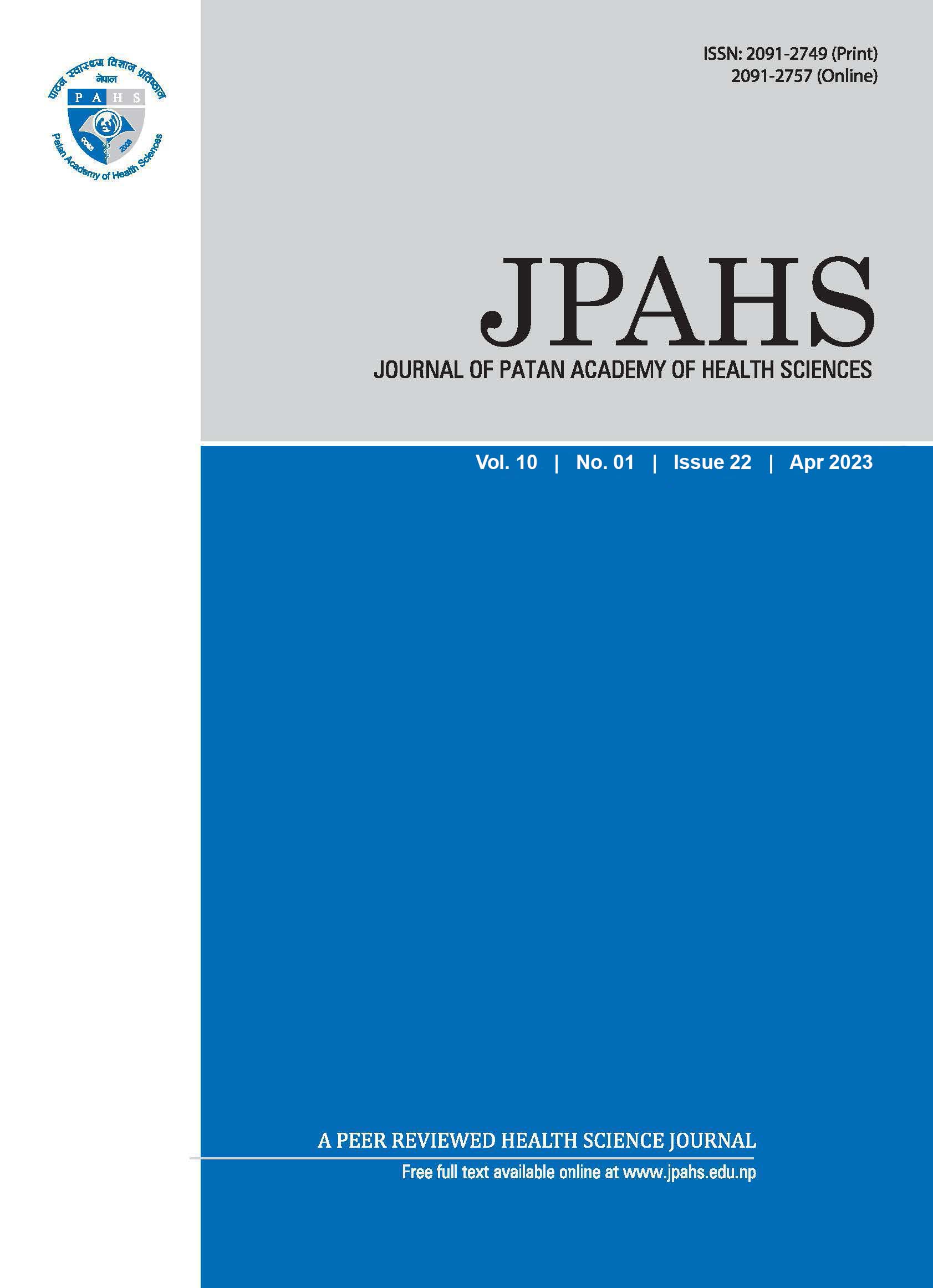Effectiveness of distraction cards on pain control among children after invasive procedure
Keywords:
Distraction Cards, Invasive Procedure, Level of Pain, Wong Baker FACES Pain Rating ScaleAbstract
Introduction: Painful medical procedures in childhood may have long-term negative effects on development and future tolerance of pain. Distraction techniques using distraction card divert children’s focus from grievous stimuli and are very simple and effective methods of reducing stress and pain. The study aimed to assess the effectiveness of distraction cards on pain control among hospitalized children after an invasive procedure.
Method: A true experimental study (posttest only control design) was conducted among 50 children aged 5-12 years (25 interventional and 25 in control) using a distraction card. Wong Baker FACES Pain Rating Scale was used to assess the level of pain immediately after IV cannulation and blood sample collection within 1 minute in both groups, and data was analyzed by descriptive and inferential statistics using SPSS version 16.
Result: The mean age of children in control group was 7.36±1.43 and in intervention group was 8.04±2.08. There was no statistical difference of age and sex in control and intervention group. The present study revealed that the mean pain score of participants in interventional group (2.36±0.490) was lower than mean pain score of participants in control group (3.72±0.458). The pain score immediately after the invasive procedure; IV cannulation and blood sample collection, was significantly lower in the interventional group compared to the control group (p<0.001).
Conclusion: The Distraction card was effective in reducing pain during invasive procedure. Therefore, it can be implemented as a useful measure to reduce the pain after invasive procedure.
Downloads
Published
How to Cite
Issue
Section
License
Copyright (c) 2025 Journal of Patan Academy of Health Sciences

This work is licensed under a Creative Commons Attribution 4.0 International License.






